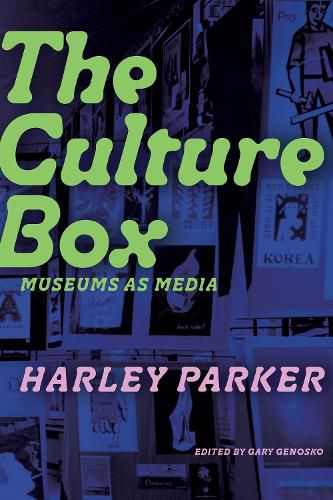Readings Newsletter
Become a Readings Member to make your shopping experience even easier.
Sign in or sign up for free!
You’re not far away from qualifying for FREE standard shipping within Australia
You’ve qualified for FREE standard shipping within Australia
The cart is loading…






In The Culture Box, Harley Parker applies Marshall McLuhan's medium theory to the museum, analyzes the museum as the site of many media, and specifies the ways in which designer-communicators can engage in inter-sense design to connect audiences and artifacts. Parker argues that museums should retrain the sensory perception of visitors and foster cultural engagement, participation, and empathy. In order to accomplish this, he recommends the construction of what he calls a "new centre," emphasizing both "new" and "news," a small "newseum" which would engender discussion and debate. Parker envisions these centres being constructed adjacent to any existing large prestige museum and containing three exhibits: a current public exhibit, an exhibit in process, and an area for gathering materials for a forthcoming exhibit. This critical edition of The Culture Box revives Parker's unpublished manuscript, one that promised to be a key contribution to the Toronto School of Communication before it was lost for some fifty years and then recently discovered by Parker's daughter, Margaret Parker. Gary Genosko presents an overview of the book's leading ideas and provides annotations outlining Parker's source materials and the salient texts by Marshall McLuhan and others. Scholars in communication, media, and curatorial studies will benefit from Parker's book, as will those interested in sensory design and McLuhan studies.
$9.00 standard shipping within Australia
FREE standard shipping within Australia for orders over $100.00
Express & International shipping calculated at checkout
In The Culture Box, Harley Parker applies Marshall McLuhan's medium theory to the museum, analyzes the museum as the site of many media, and specifies the ways in which designer-communicators can engage in inter-sense design to connect audiences and artifacts. Parker argues that museums should retrain the sensory perception of visitors and foster cultural engagement, participation, and empathy. In order to accomplish this, he recommends the construction of what he calls a "new centre," emphasizing both "new" and "news," a small "newseum" which would engender discussion and debate. Parker envisions these centres being constructed adjacent to any existing large prestige museum and containing three exhibits: a current public exhibit, an exhibit in process, and an area for gathering materials for a forthcoming exhibit. This critical edition of The Culture Box revives Parker's unpublished manuscript, one that promised to be a key contribution to the Toronto School of Communication before it was lost for some fifty years and then recently discovered by Parker's daughter, Margaret Parker. Gary Genosko presents an overview of the book's leading ideas and provides annotations outlining Parker's source materials and the salient texts by Marshall McLuhan and others. Scholars in communication, media, and curatorial studies will benefit from Parker's book, as will those interested in sensory design and McLuhan studies.